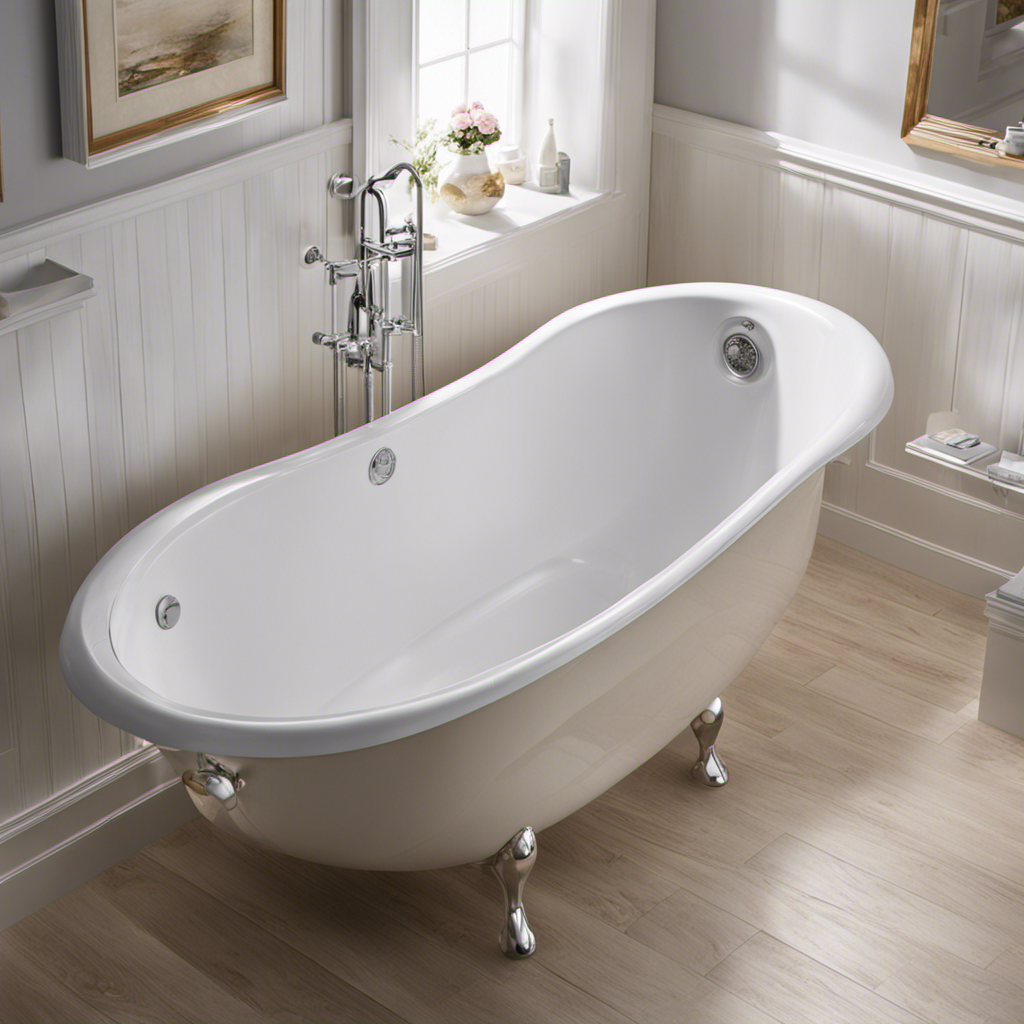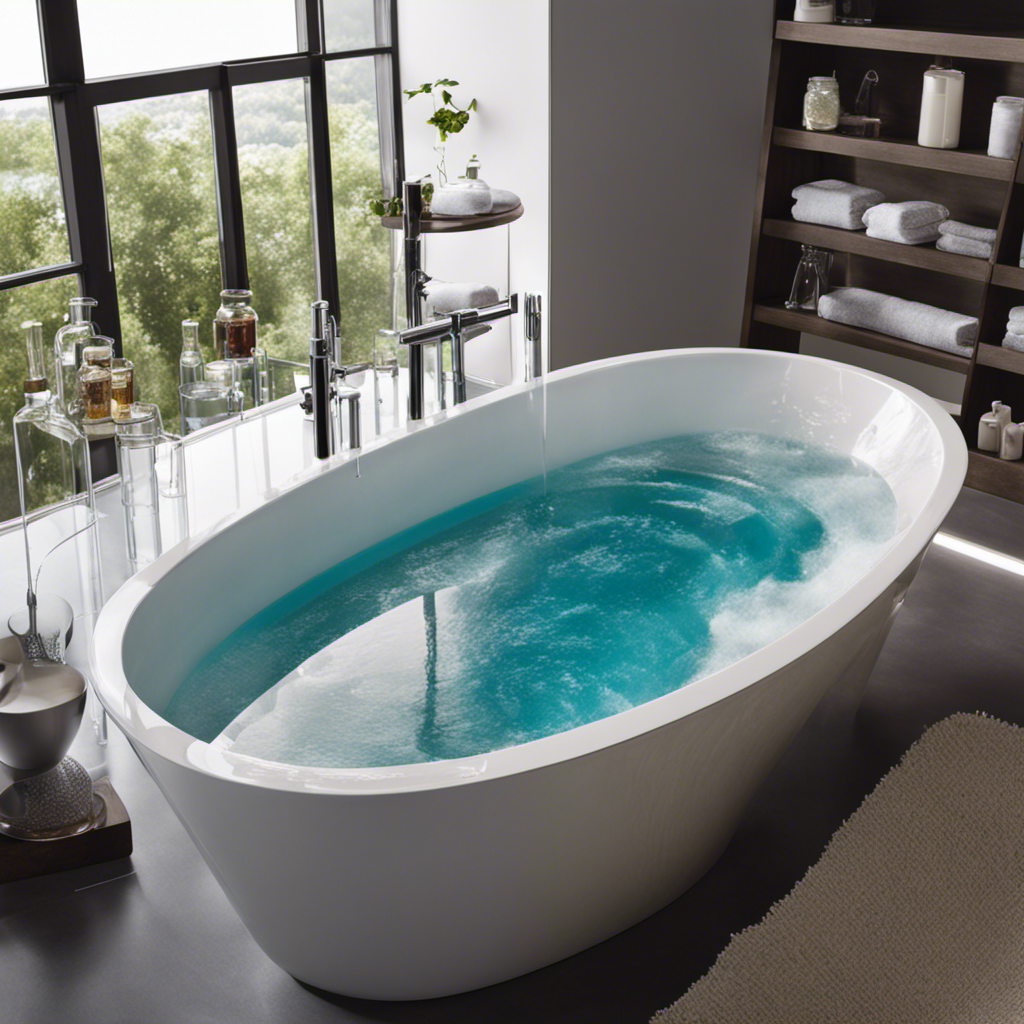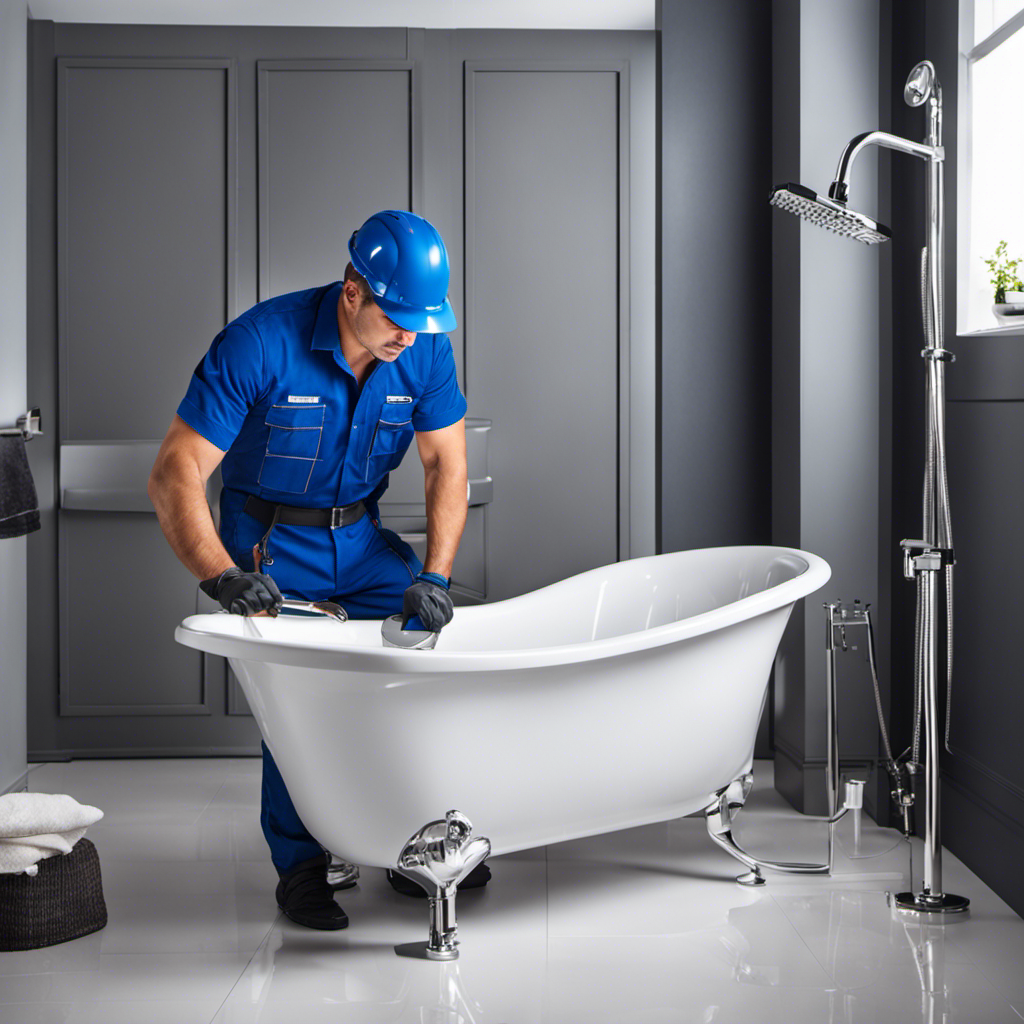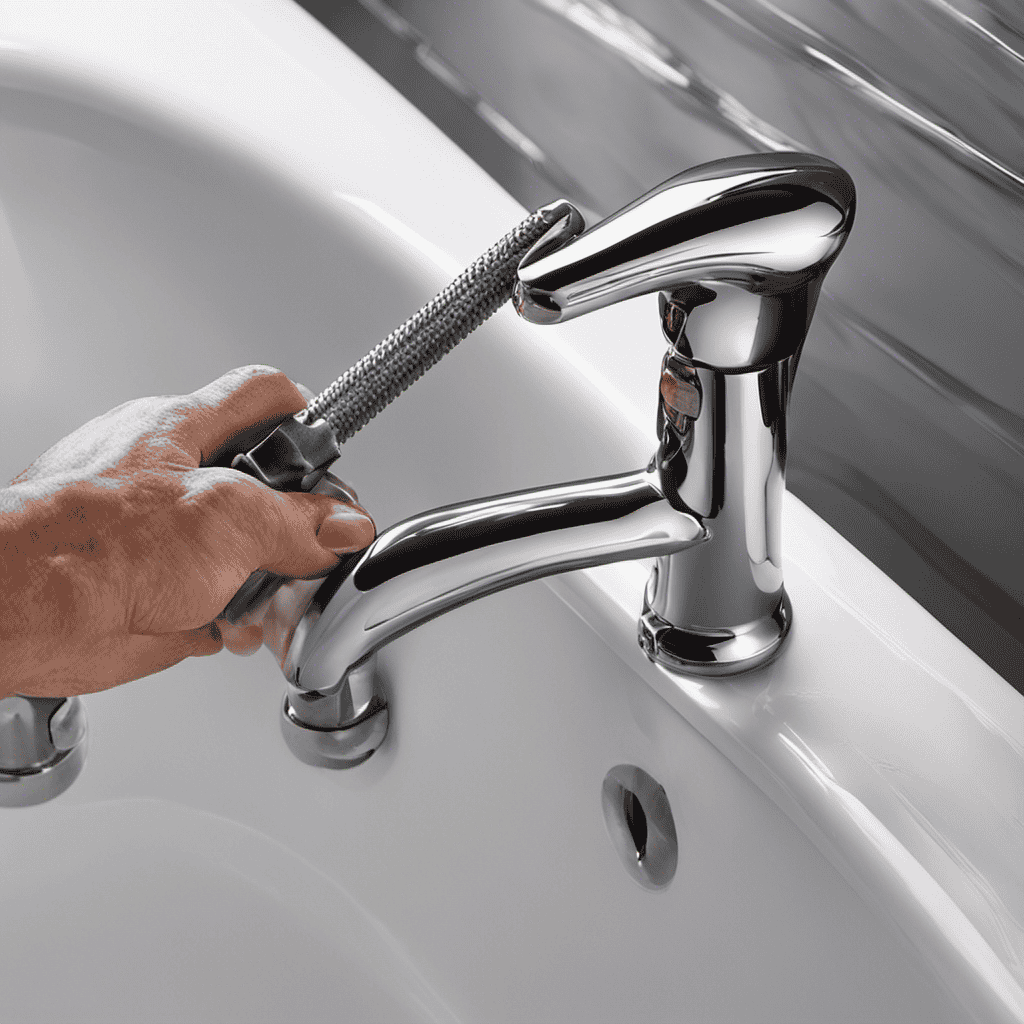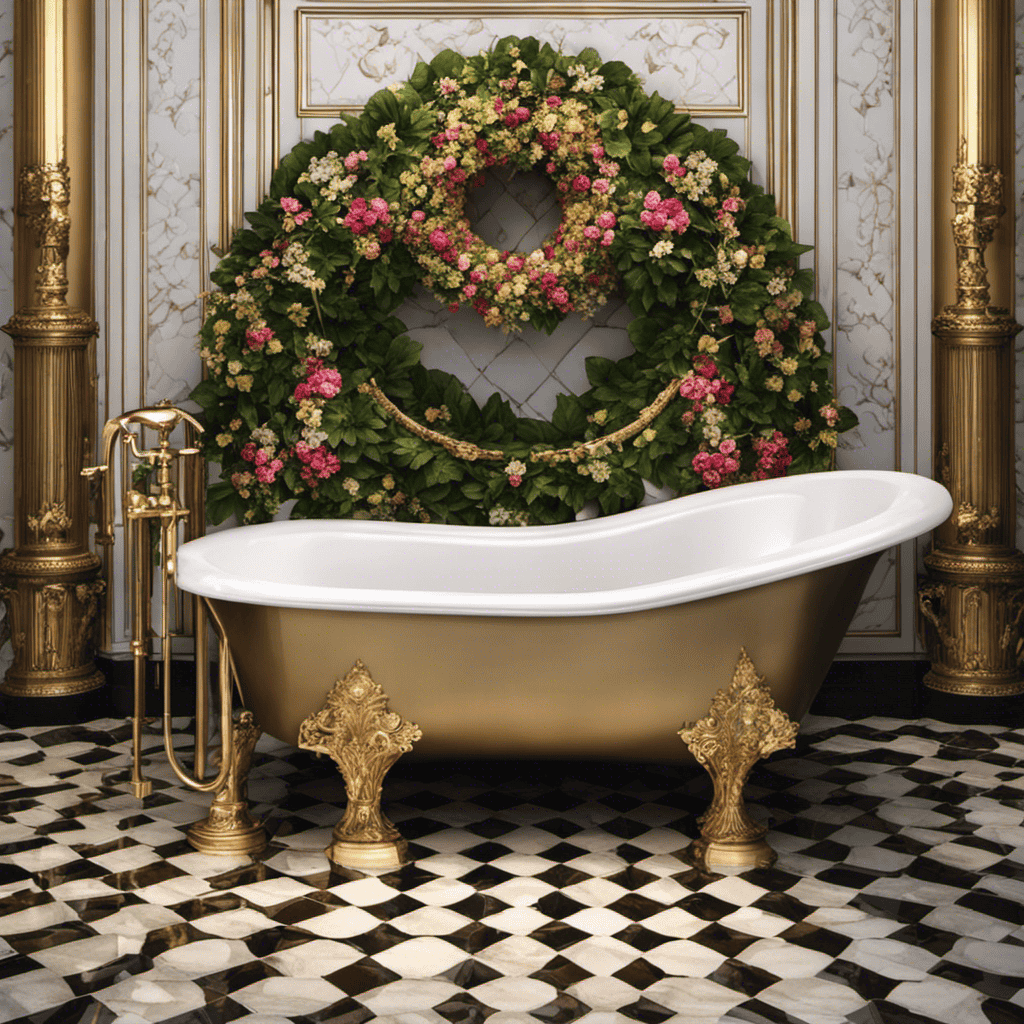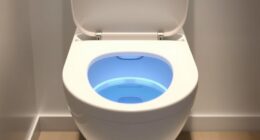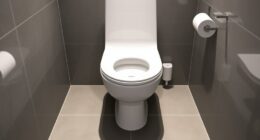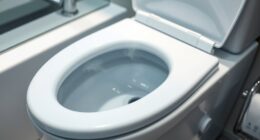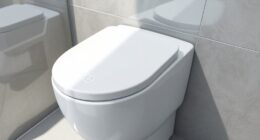As a bathtub enthusiast, I’ve always been eager to ensure the utmost security in my sanctuary of relaxation. That’s why I’m excited to share with you my comprehensive guide on how to secure a bathtub.
From assessing potential safety risks to installing essential features, I’ll walk you through each step, providing you with the knowledge and tools you need for a worry-free bathing experience.
So, let’s dive in and make your bathtub a haven of tranquility and safety.
Key Takeaways
- Install grab bars, non-slip mats, and bathtub rails for stability and support
- Assess and address potential safety risks, such as slip-resistant surfaces and securely attached fixtures
- Use appropriate tools and hardware for a strong and secure installation of safety features
- Regularly maintain and inspect the bathtub, including cleaning, checking for leaks, and testing the non-slip surface, to ensure ongoing safety.
Types of Bathtub Security Measures
You can choose from various types of bathtub security measures to ensure your safety and prevent accidents. When it comes to bathtub security options, it’s important to consider your specific needs and preferences.
One popular choice is installing grab bars, which provide stability and support when getting in and out of the tub. Another option is using non-slip mats or adhesive strips on the bathtub floor to prevent slips and falls. Additionally, you can consider installing a bathtub rail, which offers a secure handhold for added stability.
It’s crucial to choose the right bathtub safety features that suit your individual requirements and enhance your overall bathing experience. By implementing these measures, you can significantly reduce the risk of accidents and create a safer bathing environment.
Now that we’ve discussed bathtub security options, let’s move on to assessing bathtub safety risks.
Assessing Bathtub Safety Risks
To assess safety risks in your tub, start by checking for any slippery surfaces or loose fixtures. Evaluating potential hazards is essential in preventing common bathtub accidents. Here are four key areas to focus on:
-
Surface traction: Ensure that your bathtub surface is slip-resistant. Consider adding non-slip mats or adhesive strips to provide better traction and reduce the risk of falls.
-
Faucet and showerhead stability: Check if your fixtures are securely attached. Loose faucets or showerheads can become dangerous projectiles during a slip or fall.
-
Grab bars: Install grab bars in strategic locations to provide support and stability. These bars can assist in getting in and out of the tub safely.
-
Water temperature controls: Make sure your water temperature controls are functioning properly and set to a safe temperature to prevent scalding accidents.
Essential Tools and Materials for Bathtub Security
When assessing bathtub safety risks, it’s important to have the essential tools and materials to ensure a secure environment.
There are various bathtub security products available in the market that can help prevent accidents and promote safety. One such product is a bathtub rail, which provides stability and support when entering or exiting the tub.
Another essential tool is a non-slip bath mat, which helps prevent slips and falls by providing a secure footing.
Additionally, it is crucial to follow bathtub safety standards, such as ensuring the water temperature is not too hot, keeping the bathroom floor dry, and installing grab bars for added stability.
Step-by-Step Guide to Installing Bathtub Safety Features
Installing bathtub safety features is a straightforward process that can greatly enhance the security of your bathing experience. Here’s a step-by-step guide to help you get started:
-
Evaluate bathtub stability: Before installing any safety features, it’s important to assess the stability of your bathtub. Look for any cracks, loose tiles, or signs of wear and tear that could compromise its structural integrity.
-
Choose the right bathtub safety products: There are various safety products available, such as grab bars, non-slip mats, and handheld showerheads. Consider your specific needs and preferences when selecting the right products for your bathtub.
-
Measure and mark the installation points: Use a tape measure to determine the precise locations for installing the safety features. Mark these points using a pencil or masking tape, ensuring they are easily accessible and provide optimal support.
-
Install the safety features: Follow the manufacturer’s instructions to install the chosen safety features securely. Use appropriate tools and hardware to ensure a strong and stable installation.
With these steps, you can successfully enhance the safety of your bathtub.
In the next section, we will discuss maintenance and inspection tips to keep your bathtub secure for years to come.
Maintenance and Inspection Tips for a Secure Bathtub
Make sure you regularly check for any signs of wear and tear in order to maintain the safety of your bathtub. Bathtub maintenance is crucial for preventing accidents and ensuring the longevity of your tub. Here are some key tips to keep in mind:
| Tip | Description | Frequency |
|---|---|---|
| Clean the surface | Use non-abrasive cleaners to remove dirt and soap scum. | Weekly |
| Check for leaks | Inspect the faucet, drain, and pipes for any leaks or drips. | Monthly |
| Test the non-slip surface | Make sure the non-slip surface is intact and effective. | Quarterly |
Conclusion
In conclusion, securing a bathtub is crucial to ensure the safety of yourself and your loved ones. By implementing the right security measures and regularly inspecting and maintaining them, you can create a sanctuary where relaxation meets peace of mind.
Just like a sturdy anchor keeps a ship safe amidst turbulent waters, a secure bathtub provides a haven for soothing baths and rejuvenation.
So, don’t wait any longer, take the necessary steps to secure your bathtub and enjoy your bathing experience to the fullest.
